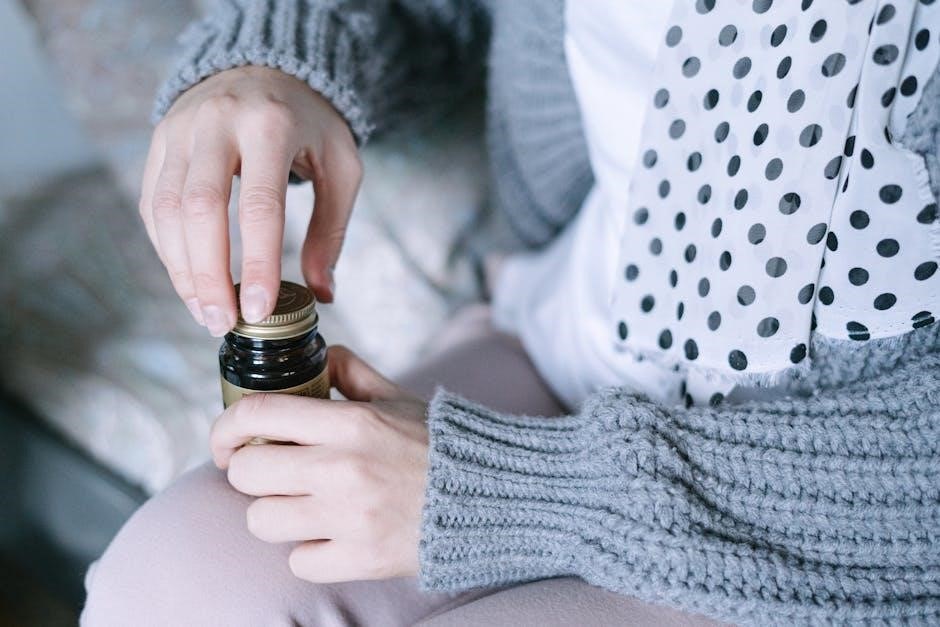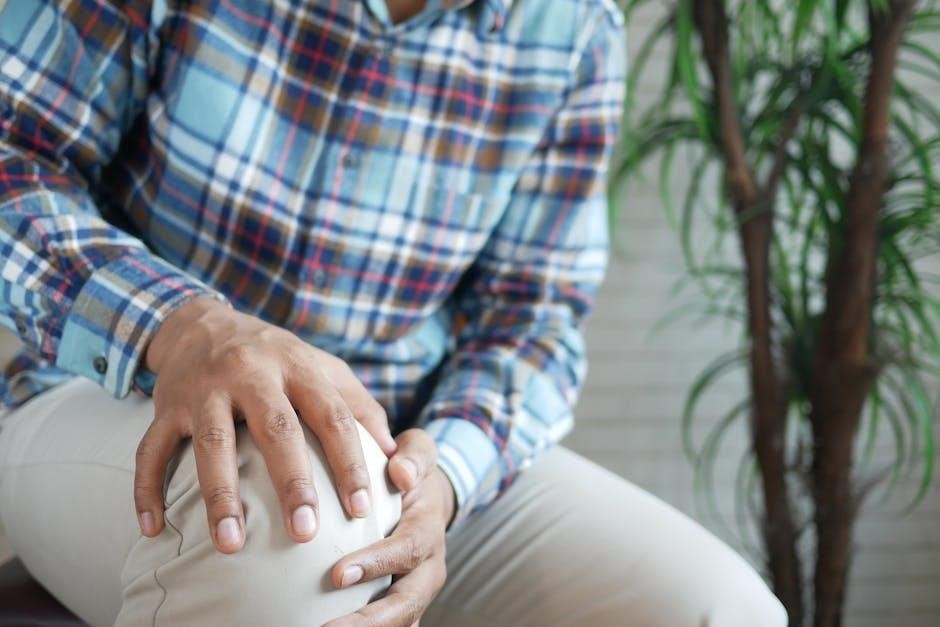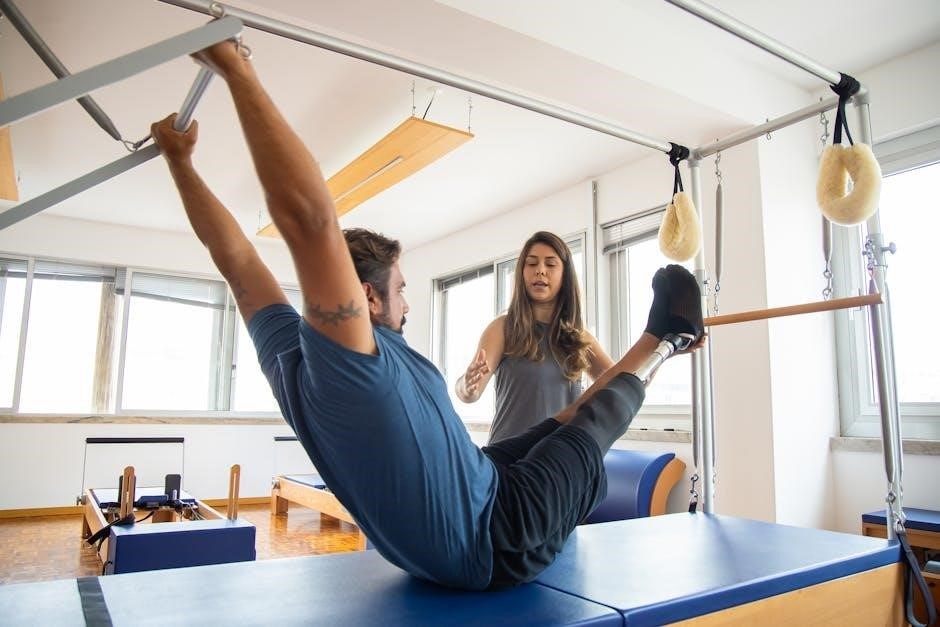The introduction to femur fracture physical therapy protocol involves understanding rehabilitation goals and outcomes, using pdf resources for guidance and support always available online.
Overview of Femur Fracture
A femur fracture is a break in the femur, which is the long bone in the thigh, and it can occur due to various reasons such as trauma, osteoporosis, or overuse. The fracture can be classified into different types, including transverse, oblique, and comminuted fractures. According to the American Academy of Orthopaedic Surgeons, femur fractures are common injuries that require prompt medical attention. The treatment of femur fractures usually involves surgery, followed by physical therapy to restore strength, mobility, and function. A comprehensive understanding of femur fractures is essential for developing effective treatment plans, including physical therapy protocols. The internet provides a wealth of information on femur fractures, including pdf resources that offer detailed guidance on diagnosis, treatment, and rehabilitation. These resources can be valuable for healthcare professionals and patients alike.
Importance of Physical Therapy
Physical therapy plays a crucial role in the recovery process of femur fractures, as it helps to restore mobility, strength, and function. A well-structured physical therapy program can improve outcomes and reduce the risk of complications. According to research, early physical therapy intervention can lead to better results and faster recovery times. The internet offers a range of resources, including pdf guides, that provide information on physical therapy protocols for femur fractures. These resources can be useful for healthcare professionals and patients, offering guidance on exercises, stretches, and other therapeutic interventions. By incorporating physical therapy into the treatment plan, patients can regain their independence and return to their normal activities, which is essential for overall well-being and quality of life, with the help of online resources and professional guidance always available.

Phases of Rehabilitation
Rehabilitation phases involve progressive steps, using pdf guides for support and guidance always online available resources.
Phase I: Immediate Post-Surgery
The initial phase of rehabilitation, phase I, occurs immediately after surgery, typically lasting several weeks. During this period, the primary goal is to promote wound healing, reduce pain and inflammation, and prevent complications. Patients are often advised to follow a specific protocol, which may include limited weight-bearing activities, pain management, and medication adherence. A physical therapist will assess the patient’s condition and create a personalized treatment plan, utilizing resources such as pdf guides to support the rehabilitation process. This phase is critical in setting the foundation for a successful recovery, and patients are encouraged to adhere to the recommended protocol to ensure optimal outcomes and minimize the risk of complications. The treatment plan will be regularly reviewed and updated to reflect the patient’s progress and changing needs.
Phase II: Weeks 3-6
During phase II, which typically occurs between weeks 3-6, the focus shifts to promoting strength, flexibility, and range of motion. Patients are encouraged to gradually increase their weight-bearing activities, using assistive devices as needed. A physical therapist will guide the patient through a series of exercises, including hip and knee mobilizations, to improve joint mobility and reduce stiffness. The therapist may also utilize various modalities, such as heat or cold therapy, to enhance the rehabilitation process. Patients can access pdf resources to supplement their treatment plan and stay informed about their progress. As the patient’s condition improves, the treatment plan will be adjusted to reflect their changing needs, with the ultimate goal of achieving full weight-bearing status and restoring functional abilities. Regular follow-up appointments with the physical therapist are essential to monitor progress.

Physical Therapy Interventions
Therapists use various interventions to promote healing and recovery always online.
Exercise Progression
Exercise progression is a crucial aspect of femur fracture physical therapy protocol, involving a series of exercises that help improve strength, flexibility, and range of motion. The progression of exercises is tailored to the individual’s needs and goals, taking into account the severity of the fracture and the patient’s overall health. A physical therapist will typically start with gentle exercises and gradually increase the intensity and difficulty as the patient progresses. This may include exercises such as straight leg raises, knee bends, and hip rotations, which can be modified to accommodate the patient’s comfort level and abilities. The goal of exercise progression is to help the patient achieve full recovery and regain optimal function, and it is an essential component of the overall physical therapy protocol, available online in pdf format for reference.
Modalities and Equipment
Modalities and equipment play a significant role in femur fracture physical therapy protocol, enhancing the rehabilitation process and promoting optimal recovery. Various modalities such as heat, cold, and electrical stimulation are used to reduce pain and inflammation, while equipment like treadmills and stationary bikes help improve cardiovascular endurance and strength. Additionally, orthopedic devices like walkers and canes may be utilized to assist with mobility and balance. The selection of modalities and equipment is based on the individual’s specific needs and goals, and is often outlined in a comprehensive treatment plan, which can be accessed online in pdf format. A physical therapist will work with the patient to determine the most effective modalities and equipment to use, and will provide guidance on how to use them safely and effectively to achieve a successful outcome. This information is readily available online.

Rehabilitation Protocols
Rehabilitation protocols are customized using pdf guides for effective treatment and recovery always available online easily.
Standard Rehabilitation Protocol
A standard rehabilitation protocol for femur fracture typically involves a comprehensive approach, including physical therapy and exercise, to promote healing and recovery. The protocol is often customized to meet the individual needs of the patient, taking into account the severity of the fracture and any underlying medical conditions. According to various online resources, including pdf guides, the standard protocol typically includes a combination of exercises, such as range of motion and strengthening exercises, as well as modalities like heat and cold therapy. The goal of the protocol is to restore function, reduce pain and inflammation, and promote overall recovery. By following a standardized protocol, physical therapists can help patients achieve optimal outcomes and return to their normal activities. The protocol is usually developed in consultation with the patient’s healthcare team, including their physician and other healthcare professionals.
Femoral Stress Fracture Protocol
A femoral stress fracture protocol is a specialized rehabilitation plan designed for individuals with stress fractures of the femur. The protocol typically involves a gradual progression of exercises and activities, with the goal of promoting healing and reducing the risk of further injury. According to online resources, including pdf guides, the protocol may include modifications to daily activities, such as avoiding high-impact exercises and wearing supportive footwear. The protocol may also involve the use of modalities like electrical stimulation and ultrasound to promote healing. A physical therapist can help develop a personalized protocol, taking into account the individual’s specific needs and goals. The protocol is designed to be flexible, allowing for adjustments as the individual progresses through the rehabilitation process. Regular monitoring and evaluation are essential to ensure a successful outcome.

Post-Operative Guidelines
Guidelines include pain management and pdf resources for post-operative care always available online easily.
Intramedullary Nailing
Intramedullary nailing is a surgical procedure used to treat femur fractures, and physical therapy plays a crucial role in the rehabilitation process, with many resources available in pdf format. The goal of physical therapy is to help patients regain strength, mobility, and independence after surgery. A physical therapist will work with the patient to develop a personalized rehabilitation plan, which may include exercises to improve range of motion, strength, and balance. The plan will also include guidelines for progressive weight-bearing activities and functional mobility training. Patients can expect to make significant progress in their recovery with the help of a skilled physical therapist and a well-structured rehabilitation plan, and many pdf resources are available to support this process, always available online for easy access and reference.
Hip Fracture Fixation Rehabilitation
Hip fracture fixation rehabilitation is a critical component of recovery from femur fractures, with physical therapy protocols often outlined in pdf documents. The rehabilitation process typically involves a multidisciplinary approach, including physical therapy, occupational therapy, and medical management. Physical therapists work with patients to develop a personalized rehabilitation plan, focusing on regaining strength, mobility, and functional abilities. The plan may include exercises to improve range of motion, strength, and balance, as well as training for activities of daily living. Many pdf resources are available to support hip fracture fixation rehabilitation, providing guidance on evidence-based practices and rehabilitation protocols, and can be easily accessed online for reference and support, facilitating effective recovery and rehabilitation outcomes.
